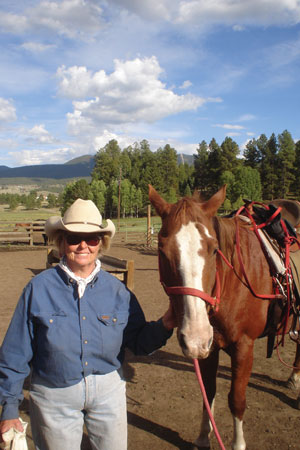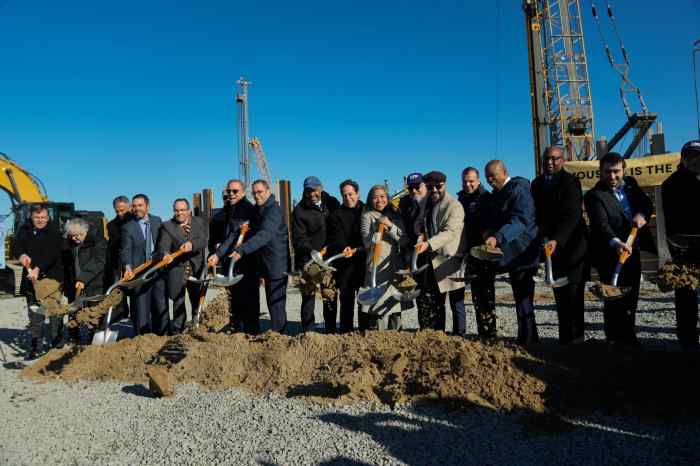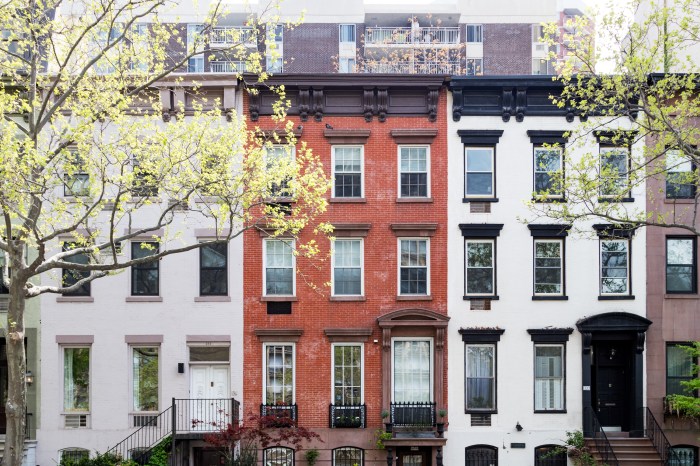The Land of Enchantment is a big draw for New Yorkers
 BY JANEL BLADOW | My friend George (born and raised on Long Island) met me at the airport in Albuquerque, New Mexico. Before heading to the hotel in Santa Fe and meeting up with the others on our trip, we made a quick stop to Pecos National Historical Park for a tour of the ancient pueblos.
BY JANEL BLADOW | My friend George (born and raised on Long Island) met me at the airport in Albuquerque, New Mexico. Before heading to the hotel in Santa Fe and meeting up with the others on our trip, we made a quick stop to Pecos National Historical Park for a tour of the ancient pueblos.
Our guide was Park Ranger Patricia Lenihan. She arrived at the National Park Service a few years earlier following a hectic journalistic stint in Washington, D.C. But she was born and raised on Manhattan’s Lower East Side, Grand Street, in fact.
In less than couple hours I had met two people in the high desert of New Mexico and both were former New Yorkers! I thought that was unique. But it really wasn’t. Over the next ten days I met almost as many New Yorkers as I did native New Mexicans. And everyone else was either from California or Wisconsin.
New Yorkers have been attracted to the plains and mountains of New Mexico as long as white men have been conquering the continent. One of the most notorious New Yorkers, Billy The Kid, born William McCarty in the Irish slums of Lower East Side in 1859, roamed the New Mexico Territory during the last nine years of his wild, short life. And for years, one of America’s greatest artists, Georgia O’Keeffe, spent her winters in New York City with her husband, famed photographer Arthur Stieglitz, and in summers left him home to shoot the changing urban skyscape while she ventured to solitude and serenity of Ghost Ranch. She eventually moved permanently to Abiquiu, just a few miles from the red hills and Joshua tree she lovingly painted.
What draws big city folks to the arid mesas of the high desert? The answers surprised me.
 [/media-credit]
[/media-credit]
- A former New Yorker, cowgirl Nancy Burch loves life on the range.
Pat and her family moved to Eldorado 10 years ago because they “wanted a great location with nature all of the time. I love the expansive views,” she says then describes how she can look out her kitchen window and see a huge vista, not a brick wall. “The space is absolutely compelling. And the sunsets, I still run out and take pictures. I don’t get tired of that, really.”
With that mindset it’s no wonder Pat works outdoors as a park ranger. She guides guests through the history and mystery of a long gone civilization of the Pecos pueblo people who lived peacefully on the mesa for hundreds of years.
The next day I took a 15 minute drive from Santa Fe to El Rancho de las Golondrinas (The Ranch of the Swallows), a stopping place on El Camino Real (The Royal Road) from Mexico City and met my next Big Apple “ex-pat”, John Berkenfield. The one-time IBM executive shared that he lived on East Ninth Street in the East Village for years but had his fill of the corporate treadmill and “retired” out west. You could see on his face and hear in his voice the passion he has for his new home in the hills as he proudly guided us around the non-profit, living ranch he oversees as Executive Director. For him, being able to share and preserve a bygone way of life with the hundreds of city slickers who pass through the working ranch annually is more exciting than the bright lights and fast pace of the big city. “But don’t get me wrong, I still enjoy visiting,” he said with a grin.
Walking around Santa Fe and touring Canyon Road art galleries, we met plenty of people from all parts of the country, including more New Yorkers. Besides the environment, the atmosphere attracts a mix of creative types.
The first artists headed west in the 1880s. While the Impressionists took to Paris, many heard of this city in the west with the most amazing light. A whole culture grew up among the mountains of Santa Fe and Taos, Ghost Ranch and Madrid, salon societies of writers, artists and other like thinkers came for the land, the light and the air and stayed for the camaraderie and enlightenment.
Today, this free, inventive spirit lives on.
“Santa Fe is different from the rest of New Mexico in lots of ways,” says Steve Lewis of the Santa Fe Convention and Visitors Bureau. “It’s a bastion of creativity, liberalism and open-mindedness.”
But it’s still the wide, open spaces that get plenty of people who felt penned in by the overcrowded cities and suburbs back east. So imagine my lack of surprise when I saddled up for a trail ride in Angel Fire, up in the state’s northern mountains, when I learned my trail guide was from Long Island.
Nancy Burch, owner and operator of Roadrunner Tours since she came to the Angel Fire Valley in 1985, is like no other Long Island girl I’ve ever met. She’s pure cowgirl now, from her off-white felt hat to her pointy-toed boots. Her teeth shine bright white from her naturally tanned face from her hours spent on the trails or in the corral.
That evening, over dinner, Nancy and I spent a longtime talking about her life of horses, trails, mountains, snow and endless sky. “For me,” she said beaming, “there’s no more perfect place to be.”
Be sure to visit:
Pecos National Historical Park, www.nps.gov/pecos, 5500 acres of original pueblo land and village, some made possible by a grant from Hollywood icon Greer Garson who lived nearby
El Rancho de las Golondrinas, www.golondrinas.org, a living history ranch that dates back to 1710
Hotel St. Francis, www.hotelstfrancis.com, a Heritage Hotel named for the patron saint of Santa Fe, it’s just around the corner from the Palace of the Governors and features handcrafted wood furniture by local artists and a menu of local foods
Ghost Ranch, www.ghostranch.org, and The Georgia O’Keeffe Museum, www.okeeffemuseum.org, along with O’Keeffe’s Abiquiu home, a great way to learn more about the artist, her work and her love of New Mexico
New Mexico Museum of History/Palace of the Governors, www.nmhistorymuseum.org, a stepping off point to learn all about the state’s history and people and to get deals on jewelry and items handcrafted by local Indians who sell them under the veranda
Chimayo Museum, www.chimayomuseum.org, and chapel in the historic village dedicated to preserving local Chimayo native traditions, art and culture
Cumbres & Toltec Scenic Railroad, www.cumbrestoltec.org, longest and highest narrow gauge railroad, in operation since 1880
Elkhorn Lodge, www.elkhornlodge.net, a great overnight stop with creek-side cabins in Chama, the southern end-spot for the Cumbres & Toltec Railroad
Angel Fire Resort, www.angelfireresort.com, a great ski and anytime spot to stay while exploring Carson National Forest area
Roadrunner Tours, www.rtours.com, a working four-season ranch, offering trail and sleigh rides

















